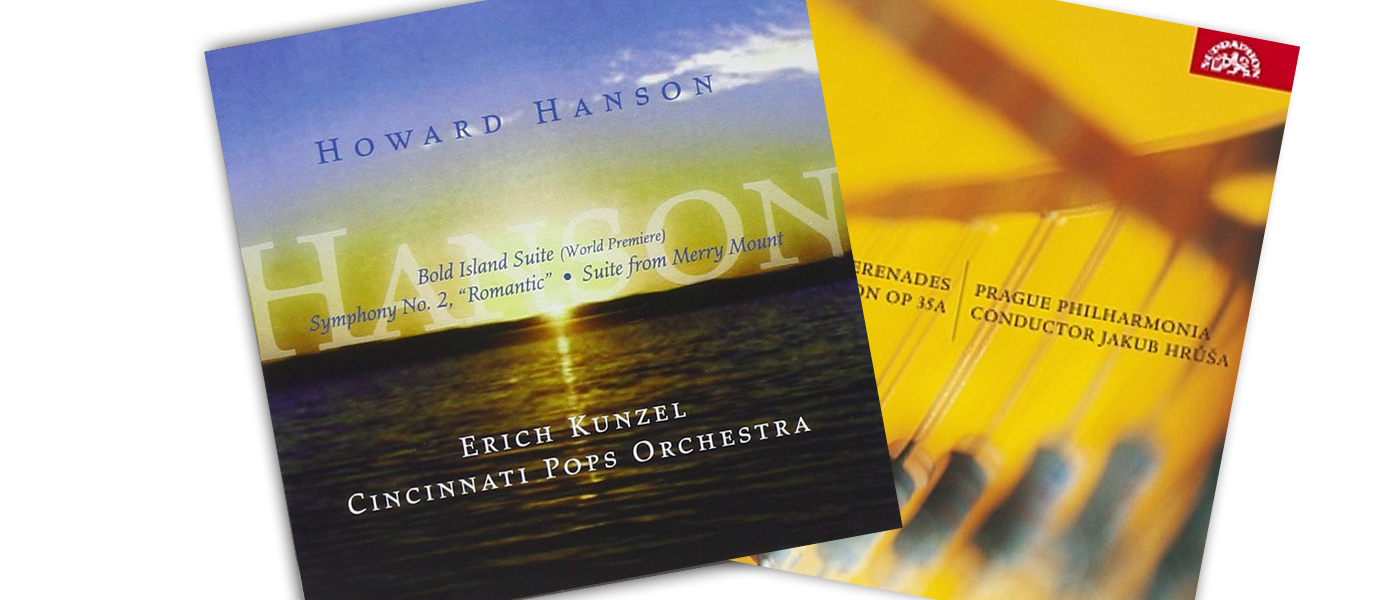
Arnold Rosner “Requiem Op 59”
Kelley Hollis – soprano, Feargal Mostyn-Williams – countertenor, Thomas Elwin – tenor, Gareth Brynmor John – baritone, Crouch End Festival Chorus, David Temple – chorus master, London Philharmonic Orchestra with Nick Palmer – conductor, Walter Simmons – producer. Jonathan Allen – Engineer. Toccata Classics TOCC 0545.
As we have lost 200,000, with many surviving, but enduring long-term medical issues, the Rosner Requiem is allied to the age of COVID-19. Rosner’s music can sound dark and angry, sometimes with texts to match. It is unclear what motivated Rosner in 1973, at age 28, to write about mortality in such dark-hued tones using texts on death sourced from around the globe. I am told he had no personal losses at the time, but death has appealed as a subject matter for many artists, starting with 19th century romantics in the realms of art, music, and literature. Only one section of the Requiem is adopted from the Roman Catholic Latin mass: the eighth (Libra Me) movement. The Book of Revelation is referenced in the first movement, which was originally intended for an opera based on The Seventh Seal, an Ingmar Bergman film. Rosner abandoned the project because director Bergman chose to retain sole rights to the film.
The Britten War Requiem of 1962 is an exemplar of a Requiem drawing from a variety of texts. Poems written by Wilfred Owen, while a soldier in World War I, are central to the Britten Requiem as are the Latin texts. Earlier Requiems exist with mixed texts, but the Britten was the one that started the trend that has resulted in many works using multiple texts.
Secrets Sponsor
For two movements, Rosner references the Jewish Kaddish in Aramaic and a Buddhist chant in Pali, while two other movements are solely orchestral. The remainder further challenges the choir and soloists by setting texts in different languages. These are sourced from writers Gottfried Benn (in German), François Villon (in French), Walt Whitman (in English), and Dante (in Italian).
When listening to the Rosner Requiem, it is best to focus on the music and the way it is shaped to the text’s language. Dwelling on the shockingly dark texts in the program book can be a diversion. Rosner has a unique voice and his idiom is apparent in the ten interlocking movements. This is an organic work that, when taken as a whole, beautifully illustrates the composer’s musical vocabulary. Heard without reference to the text you will want to pull it off your shelf many times and put it in your CD player.
Prior, I have examined two Rosner CDs, and gave a significant amount of background information which I do not want to repeat. Please see the URLs below:
https://hometheaterhifi.com/features/what-were-listening-to-vol-2/
https://hometheaterhifi.com/features/what-we-are-listening-to/what-were-listening-to-vol-7/
To understand why Rosner’s music evokes many modes of expression, I quote from the program notes written by Walter Simmons, his friend since 1970 and the CD’s producer:
“Rosner’s musical language was founded upon the harmonic and rhythmic devices of the polyphonic music of the Renaissance and early Baroque. These roots can be found, to a larger or smaller degree, in virtually all his music. To them he added a free triadicism and exotic modalities, intensified in some works by more contemporary harmonic dissonance, enriching this language with the lavish orchestration and emotional drama of turn-of the-century late Romanticism – and yet, despite its fusion of seemingly incongruous elements, most of his music is readily accessible, even to untutored listeners. What makes Rosner’s music worthy of serious consideration, rather than being merely an integration of earlier styles, is the way he shapes it.”
The Requiem is dedicated to Mr. Simmons who heard Rosner play some early works at the piano. As a musicologist, Simmons recognized Rosner’s talent. Rosner thought Simmons was drawn to works of complexity, Rosner chose to dedicate the piece to him.
The work is scored for four vocal soloists, chorus, and large orchestra. There are triple woodwinds, seven percussionists, and seven trumpets, three of which are situated in the balcony for antiphonal effects. Some of the musical styles of the Requiem do not reappear until much later in Rosner’s catalog. I am amazed how much of his craft was fully formed at age 28.
The work oscillates between the scales of orchestral power and chamber-music intimacy. Below is the diagram of the deployment of the forces from the score for each movement. After the first movement which uses every resource Rosner has, the second movement is scored for tenor and percussion. This is followed by a full orchestral statement in movement 3. The fourth movement is for soprano and reduced orchestra.
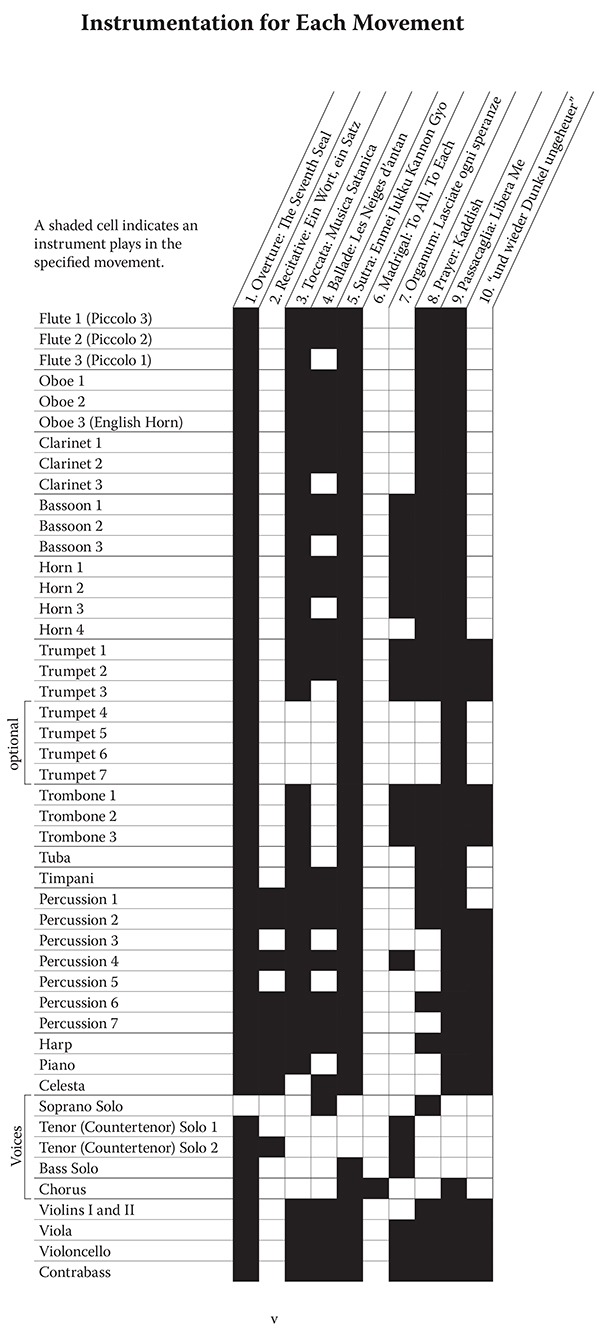
Instrumentation per Movement “Rosner Requiem”
The fifth movement takes its primary text as the Buddhist sutra chant for long life. The text is supported by an ostinato figure that provides a minimalist character. Once having lulled the listener into a meditative realm, the music takes a shockingly sharp turn towards a gruesome section that quotes from the Tibetan Book of the Dead, depicting the underworld sung in English. The chants return to conclude the movement. Upon re-listening, I preferred to bypass the short English section and jettisoned it with the free Audacity editing software.
Movement six drops back to a capella madrigal that harkens to the Rosner style with roots in the renaissance. The seventh movement uses mediaeval organum, central to Rosner’s musical voice, for a small orchestra and a vocal trio. Most of the orchestra, with limited percussion, is used with a soprano in the eighth movement. This section comes as close to the 20th-century romantic style as Rosner gets.
The huge forces of the entire ensemble, with the antiphonal brass, make a final appearance in the ninth movement. The final orchestral section is a summation executed with reduced forces. If Rosner has a weakness, it is his penchant to drive the forces to their limits. The seven percussionists, for example, make big sounds, but not a new sound world we would expect given all the players. The wind players can also find themselves over extended. This over-the-top writing is isolated in movements 1 and 9. Rosner in overdrive works in the 5th movement built on the Buddhist Sutra chant.
If someone had performed the Requiem in 1973, despite the expense of massing the necessary forces and properly rehearsing them, Rosner’s career would have been launched. The 208-page score takes 62 minutes, it basically would have subsumed the whole program with a very short first half. Half the audience would have stayed home as inclined to do when a new work dominates the program. This is the worst-case situation for the orchestra’s management with a huge amount of money needed to mount the work and reduced level of ticket sales. Works like this are performed only when composers are a household name. So, the Requiem was filed away. He must have known it might never be heard. Yet, he was compelled to write it. It was only with the faith of his abilities that he could believe the work would come out of the filing cabinet and eventually be heard.
Simmons’s who, 25 years later, was producing CDs of long forgotten American music, if he could secure funding, produced recordings of Rosner’s 5th and 8th symphonies for the Naxos label when Rosner was alive. Rosner self-funded some CDs on the Albany label. Only one 20-minute orchestral work, Responses, Hosanna, and Fugue, was recorded with a first-class orchestra, part of a 3-part survey of American music by major label Harmonia Mundi prior to the Toccata CDs with foundation funding.
The conductor who led that project was David Amos. He selected the works to be recorded. Amos who had given premiers of some of Rosner’s works, now had a chance to put one on disc. That recording received rave reviews and alerted the world to Rosner’s talents. Away from this, Rosner’s self-financed recordings received excellent reviews with reservations regarding performance limitations.
After Rosner’s death, funding was secured for a major recording project of which the Requiem is the 6th CD, with more to come. One goal of this project was that the recording would be a world class production. The London Philharmonic does an exceptional job sight-reading new music. There were no rehearsals; instead, the orchestra recorded the work across multiple sessions and with limited preparation. What results is this definitive performance that retains its air of spontaneity at live mics.
This is the fourth Rosner CD with the London Philharmonic that has been released on Toccata. I doubt this almost unplayable work could have been executed in a blemish-free performance had the LPO not previously recorded three hours of his music. The conductor of the Requiem, Nick Palmer recorded a CD of some works by Rosner when he was alive, but he never had a good orchestra. In the Requiem Palmer achieves amazing results given the scale of the huge orchestral forces, chorus and soloists and their lack of rehearsal.
Rosner’s Fifth Symphony is an uplifting work that speaks to everyone. It is the entry point for discovering Rosner’s idiom. My impressions of Rosner’s symphony #5 are at this URL
https://hometheaterhifi.com/features/what-we-are-listening-to/what-were-listening-to-vol-7/.
The Fifth Symphony was written just prior to the Requiem. Why he turned from this life affirming work to the radically different Requiem for his next work is not clear. Rosner often changes styles in adjacent works. Perhaps you should also listen to his later Five Ko-ans for Orchestra before approaching the Requiem. They are set in a closely related style to the Requiem’s larger-scale movements, but with less complexity and textured layers. I discussed it at the URL below:
https://hometheaterhifi.com/features/what-were-listening-to-vol-2/
The CD (also available for lossless download and streaming) is excellent except when the seven trumpets are active. The antiphonal effects are integral to these sections and only a five-channel recording can accurately reproduce the effect. A center channel would clarify the efforts of the seven percussionists. This recording was unfortunately only mixed in stereo.
Rosner opined if one dedicated 24 hours a day, 365 days a year, for a lifetime they would not have the bandwidth to listen to everything written in just one day given the number active professional composers.
https://www.phidler.com/rosner/arbd.html
There are so many composers in the world and 99.6% of this music lays in file cabinets. In Rosner’s Requiem case it is a remarkable collaborative story hinging on faith in one’s abilities and the support of a friend of 40 years who produced the recording. At 28 years old Rosner produced one of the greatest works by an American composer and 47 years later we hear it for the first time. Rosner balances his expansive range of styles and creates a unique work for the repertoire. The Requiem invites many re-listenings. One will not grow tired of the Rosner Requiem.

Multiple Artists “Modern Masters III”
Arnold Rosner Responses, Hosanna, And Fugue for strings and harp – Norman Dello Joio Meditations On Ecclesiastes – Alan Hovhaness Psalm And Fugue For String Orchestra
The Philharmonia Orchestra with David Amos – Conductor, Tim McDonald – Producer, Mike Ross -Engineer, Recorded November 1990, Harmonia Mundi – HMU 906012 reissued Kleos Classics both discontinued. Lossless download at Qobuz.
“I had never heard of Arnold Rosner, and keep in mind that I have a special interest in Modern American music. From the opening bars of Responses, Hosanna, and Fugue, I was hooked not only on the piece, but on the composer – to me, a major voice” wrote the important critic Steve Schwartz when he heard this CD in 1991. It was not until the new Toccata recording of Rosner’s orchestral music that a first-class orchestra was involved again.
In the early 90s recording companies were releasing a huge amount of American music that was getting a first hearing or had been on a long-discontinued LP in OK performance and matching sound at best. CDs cost twice as much as LPs, but listeners were purchasing these as quick as they came out. Classical labels were making money again. It did not last very long as the number of releases far exceeded that amount of music that could be absorbed.
This is part of a 3 CD set of lesser known American composers issued in 1991. The idea came courtesy of the conductor David Amos, who arranged the underwriting for the project via the International Musicians Fund. Amos had conducted Rosner in concert and felt his music was perfect for the project.
Orchestrated for harp, string orchestra and string quartet, the same grouping as the world-famous Vaughan Williams Tallis Fantasia, it took courage to take on such a famous work yet say something different.
“Light floods these pages with high candle-power. Solo lines float effortlessly out of a stern textural blanket and rhapsodically carry the argument forward” writes Rob Barnett. “A quick dance, plays off vivacious, New World rhythms and syncopations against Old World modes” writes Steve Schwartz of the second movements, and of the third movement “it leaves one not with the impression of a contrapuntal workout as much as a deeply-felt song”.
The whole recording makes great music in the time of COVID. No room to discuss the other works but to note the Dello Joio won the Pulitzer prize. The great news is the Amos Modern Masters series is back as lossless download at the Qobuz store. It streams at most sites lossy but 90% of the wonder of the Rosner, with 20 string parts active at the same time, is lost. You can download all the works in the 3 CD series or just an individual work. Now is the time to download before it gets discontinued again.
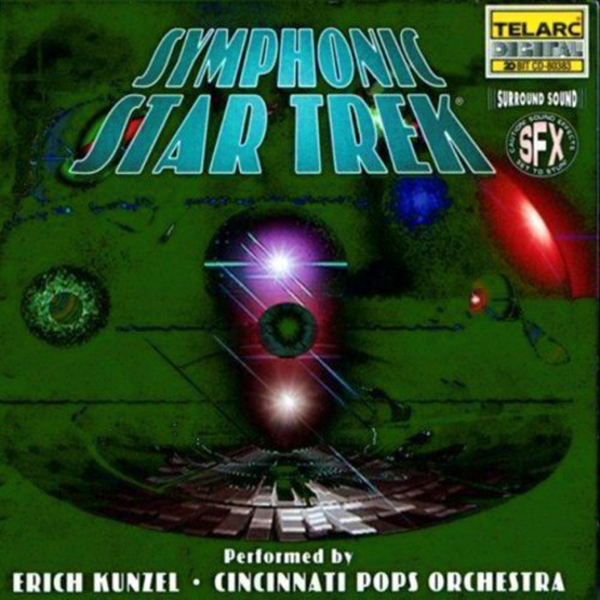
Erich Kunzel and the Cincinnati Pops “Symphonic Star Trek” Telarc, 20-bit CD
From one of my favorite orchestras is music from one of my favorite movie genres. Yes, Star Wars has John Williams, but the Trekkies have Jerry Goldsmith, Alexander Courage, James Horner, and others. Besides some pretty impressive sound effects, the music is familiar in a nostalgic sense, yet new again because the recording brings an expansive soundscape to the TV themes and the fanfares have a fresh resounding quality that resound throughout the orchestra hall. The intro is done by the late Leonard Nimoy himself and sounds like it could have made it into a final film with Kirk and the gang.
The sound effects are recreated for this recording and include several starship flybys, an Alien probe, Tribble trouble, Bird-of Prey decloaking, a transporter, Nexus energy ribbon and a visit by the Borg. Because Telarc recorded this digitally, no compression was used, and a warning is on the label to be certain that your playback levels are not set too high or equipment and ears may be vaporized. It’s over 72 minutes of fun, even if you are not a Trekkie. Live long and prosper, already!

George Winston “Linus and Lucy- The Music of Vince Guaraldi” – piano, Dancing Cat Records, CD
And, while we are on TV theme music, something a bit more down to Earth with the Peanuts Gang. Winston plays the music close to Guaraldi’s vision, but with a bit more playfulness. The piano sound is impeccable, and the score is jazzy, sentimental, and very relaxing to listen too. ‘Cast Your Fate to the Wind” is perhaps my favorite piece, but the music as a whole makes me reminisce about watching the Thanksgiving, Halloween, and Christmas specials as a kid. The music is timeless and can be appreciated by the whole family. The recording is quite dynamic, and the mic sounds like it is close to the soundboard, with some surprisingly deep bass notes. This makes great background music when entertaining guests. Don’t be a blockhead. Get this disc!
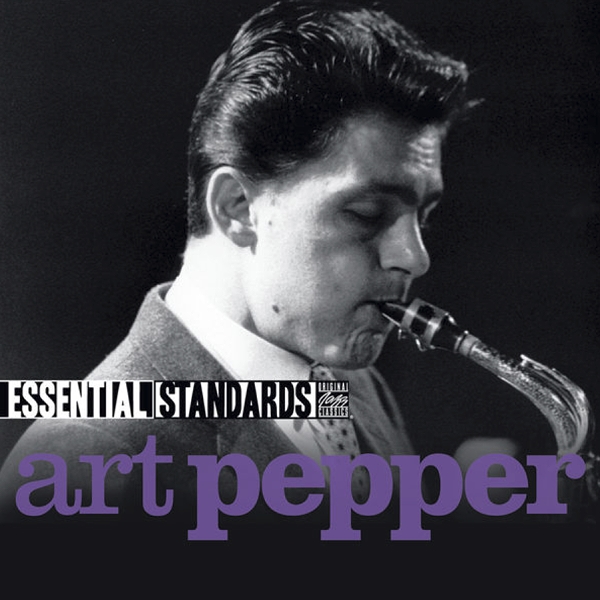
Art Pepper “Essential Standards, Original Jazz Classics” Released 12/31/2008
Art Pepper is one of my favorite classic jazz musicians. He was an alto sax player of the late 1940’s through to the early 1980’s, having passed away in 1982 at age 56, way too early. He had a huge drug problem, like so many entertainers, and it affected his career in a tremendous way. This album highlights some of his best tracks from his numerous albums, and it is really terrific. It is only available on CD and streaming, no vinyl. But that is certainly better than nothing. He also played clarinet, as exemplified on this album. The accompanying musicians are also incredible.

Tchaikovsky “Hymns of the All Night Vigil, Opus 52 6-9” Best Buy Classical, Released 4/3/2012.
Tchaikovsky is probably best known for his orchestral works. This album shows his genius for choir music. It is truly beautiful and very relaxing, at a time when we can use something that is relaxing. Recorded superbly with an excellent sound stage. CD available from Presto Classical for 15 bucks.
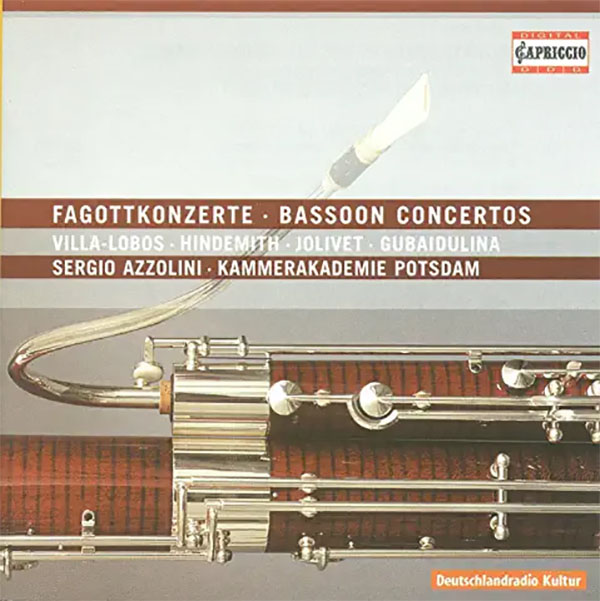
Sergio Azzolini/Kammerakademie Potsdam “Bassoon Concertos: Villa-Lobos, Hindemith, Jolivet, Gubaidulina, Capriccio” CD
Usually when I look for new classical music to add to the library, I’m searching for specific works. With the extra bassoon practice time I’m currently afforded, I’ve bought several reference CDs to help me learn new pieces.
Recently though, I decided to focus on a particular performer: Italian bassoonist Sergio Azzolini. I first heard him play on a recording from the 1995 Conference of the International Double Reed Society where he and Stefano Canuti performed six arias from Rossini’s Il Barbieri di Siviglia arranged for two bassoons. Soon after that, he released a performance of the recently discovered (by him) Concerto for Bassoon and Orchestra by Rossini.
As I’ve made expanding my repertoire a priority of late, I wanted to hear his interpretation of more modern works like the Concerto for Bassoon and Low Strings by Sofia Gubaidulina and the Concerto for Bassoon and Strings by Andre Jolivet. This one is a real hum dinger. It’s considered by most bassoonists, me included, to be the single most difficult bassoon work in the literature. I’ve played a lot of bassoon pieces, it’s definitely the hardest. When first introduced to it back in 1985 by a fellow student at the New England Conservatory, my alma mater, he described it as “relentless.” That is an accurate description.
The CD also contains a performance of the rarely heard Concerto for Trumpet, Bassoon and Strings by Paul Hindemith. One would think this to be an odd pairing but if Copeland could bring a trumpet and English horn together in his beautiful work Quiet City, then it makes more sense.
Needless to say, Azzolini shines in every track of this disc. His tone is ideal for music of all eras. His technique in the Jolivet is nothing short of amazing. The only performance of this piece that is equally fine is Sophie Dervaux’s (principal bassoonist of the Vienna Philharmonic) live performance on YouTube where she plays this ridiculously difficult concerto flawlessly and from memory.
Secrets Sponsor
If you should be as impressed with this CD as I, there are also recordings of Azzolini playing Vivaldi concerti on baroque bassoon. This is a fascinating take on these pieces which I’m sure many listeners will enjoy. For now, though, I think I’ll cue up the Jolivet just one more time for something to aspire to.
For this month’s installment, I’ve elected to provide you with some audio/visual samples of what I’ve been listening to. Enjoy!
Kaj Kolah Kahn by Pink Martini: https://www.youtube.com/watch?v=ITy1xkPtS_4
Malegueña by Pink Martini: https://www.youtube.com/watch?v=j0x9lJ8iS7U
Johann Strauss Sr. – Radetzky March / Vienna Philharmonic: https://www.youtube.com/watch?v=pYYTdtRrg8M
John Philip Sousa – Stars and Stripes Forever / U.S. Marine Band: https://www.youtube.com/watch?v=a-7XWhyvIpE
Fanfare for the Common Man – Aaron Copland / Louis Lane & Atlanta Symphony Orchestra on Telarc label: https://www.youtube.com/watch?v=3zHPyTrPWPI
One Night in Rio – Louis Austin: https://www.youtube.com/watch?v=8cKkBcmm2cE
I’ve been on a bit of a Blues kick this month…
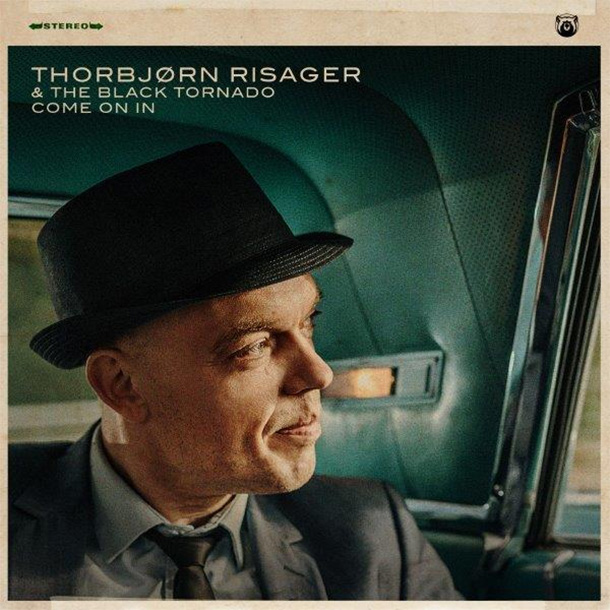
Thorbjorn Risager & The Black Tornado “Come On In” Ruf Records, 2020, 24/44 via Qobuz
I discovered this Danish Blues/Rocker and his band via a track on a compilation CD released by DALI speakers. A little more online digging enlightened me with his discography and their 10th album, Come On In, which was released early in the year. It’s impeccably recorded, has one hell of a groove and the man and his band have a ton of character that is copiously spread across this 10-track set. Blues is one of my favorite music genres, but it also can easily get repetitive with a lot of similar sounding material and acts out there. Which is why when a more unique take on 12-bar blues hits my ear, it grabs my attention. The title track gets you up and running with a funky driving rhythm and a resonant, somewhat mysterious undertone. There is a bit of a film noir feel to the tracks “Two Lovers” and “On and On”, a bit of a frenzied boogie happening in “Over the Hill” and even a bit of a tropical island vibe on “Nobody But the Moon”. Risager’s vocals range from a deep, resonant growl to more of a ragged tenor, either way they are dripping with soul and personality. This one has been on my system numerous times this month and I don’t see that changing anytime soon.
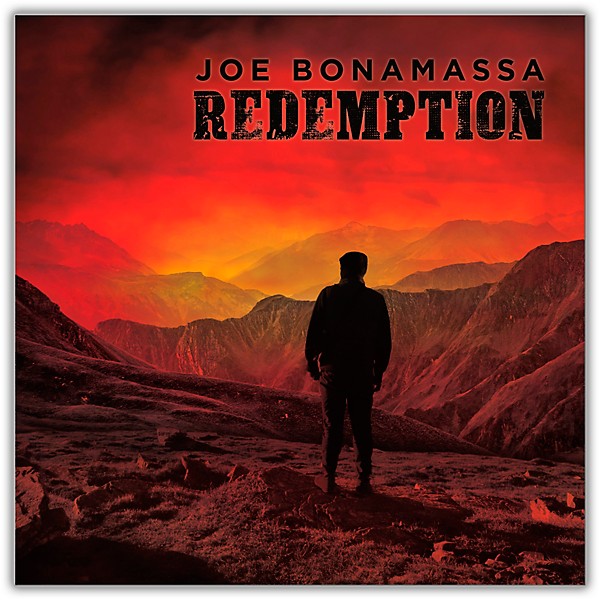
Joe Bonamassa “Redemption” Provogue-Mascot Music, 2018, 24/44 Streamed via Qobuz.
There is no denying Joe Bonamassa’s skill with an axe. I’ve seen him live and the man is incredibly talented as a player and is a great showman live. He also is somewhat of a blues industry unto himself with 15 studio albums, many released on his own record label, along with even more live albums, several concert videos, and collaboration albums with the likes of singer Beth Hart. Redemption (his 13thstudio effort) is another Blues album that grabbed me with it’s different-from-the-norm sound and content. It also seems that with this album Bonamassa is becoming more of an experienced writer and lyricist within his field. Definitely a bit of introspection going on in a number of these tracks like “Self-Inflicted Wounds”, “Pick Up the Pieces” and “Stronger Now in Broken Places” and these days, many of us have a little more time for some introspection. I particularily like the track “The Ghost of Macon Jones”, a thick, mysterious sort of ghost story with a guest appearance by Jamey Johnson. And of course, Bonamassa’s playing is exceptional throughout the entire album, showcasing a broad array of styles. Redemption is a deeply enjoyable blues cocktail that can be enjoyed either in solitude or with friends.
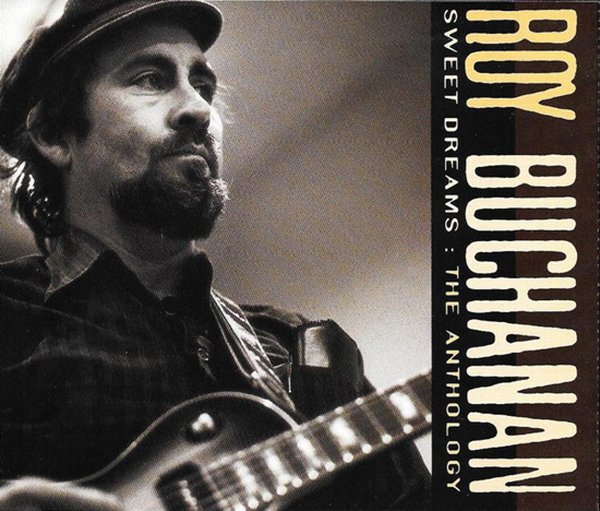
Roy Buchanan “Sweet Dreams: The Anthology” PolyGram Records, 1992, CD.
You will have those who will argue with passion on who was the superior player on a Fender Telecaster, Roy Buchanan, or Danny Gatton. To say that both men were gifted on the guitar would be like saying that Glenn Gould knew how to “tickle the ivories”. The grossest of understatements. Both men were revered among their peers and both men had troubled lives and ultimately tragic ends. I’m not one to argue the point, I like both players quite a bit. Buchanan though has a little extra appeal to me because he was so incongruous. A soft spoken, grandfatherly looking figure who could often coax notes out of a guitar that could scarcely be believed. Early in his career while part of Ronnie Hawkins band he tutored a very young Robbie Robertson. Later on, Jeff Beck was influenced by him and dedicated a song of his album Blow by Blow to Buchanan, the classic “Because We’ve Ended as Lovers”. Rumors persist that The Rolling Stones wanted Buchanan to join them after founding guitarist Brian Jones passed away. He was an odd character that came close to fame but never quite made the final step.
Sweet Dreams: The Anthology is a great primer on Roy Buchanan and covers a large swath of his recording history at Polygram (he would later move on to Atlantic and finally Alligator Records). There is a little bit of everything on this compilation, from early tracks with Charlie Daniels on vocals, the well-known “The Messiah Will Come Again” and “Sweet Dreams” that gave the compilation its name, to some sizzling acoustic blues numbers, Hendrix and Booker T covers and even a version of Joe Walsh’s “Turn To Stone”. The standout tracks for me beyond “Messiah” are the live tracks taken from Buchanan’s 1975 Livestock album. An incredible version of Neil Young’s “Down by the River“, Al Green’s “I’m a Ram”, and an incendiary rendition of “I’m Evil” that can raise the hairs on the back of your neck with his maniacal guitar solos. The set ends with a 12-minute unreleased solo acoustic piece called “Dual Soliloquy” that is a sweet, melodic, and tasteful improvisation to take up the last bit of tape in a recording session. If you love guitar, blues, oddball classic rock or all of the above, you should have this set in your collection and revel in the troubled genius of this departed master of the Telecaster.


